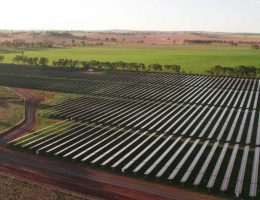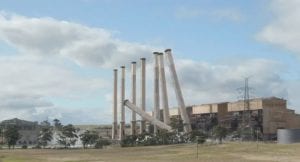Federal energy and emissions reduction minister Angus Taylor has been warned not to instigate any hasty energy market interventions in response to EnergyAustralia’s plan to close the Yallourn power station in 2028, with a senior market regulator saying doing so would be unhelpful.
Speaking to ABC Radio National on Thursday morning, chair of the Energy Security Board Kerry Schott said threats of energy market interventions by the Morrison government were making it more difficult to invest in new generation capacity.
“The commercial operators will tell you that with government interfering in the market, in the sense of building things, it does make it much harder for them to build things,” Schott told ABC Radio National.
“It does make it much more difficult for a commercial plant to make plans about what they’re doing. The commercial plants have been saying that for some time, and of course, it’s right.
“If you’re planning to spend half a billion dollars or so, the possibility that the government might be going to do exactly that is not helpful for your business case,” Schott added.
It’s a familiar tale from Taylor. The Morrison government has threatened to make a number of direct interventions in the energy market, including plans to build a new gas generator at Kurri Kurri, that could be as large as 1000MW in generation capacity, in response to the closure of the Liddell power station.
Forecasting produced by the Australian Energy Market Operator suggests that just 154MW of new generation capacity would need to be built by 2023 to fill any potential electricity supply gap – however, the Morrison government is considering investing in a much larger gas plant through Snowy Hydro.
AGL Energy intends to close the Liddell power station in 2023. The company first told the energy market of its intention to close the power station in an announcement made in 2015 and later reconfirmed its position in 2017.
In response, the then Turnbull government threatened a number of market interventions, including the possible compulsory acquisition of the Liddell power station to keep it operating.
Ultimately, the threats made AGL Energy’s investment decisions more difficult, with the company planning to replace the Liddell power station with a range of investments in renewables, energy storage and a gas generator – development partners that had been lined up by AGL Energy, including potential financiers, were spooked by the threatened federal government interventions.
There are fears that the Morrison government could make similar threats in response to the early closure of Yallourn, as well as other coal plant closures that could follow.
In a statement following the EnergyAustralia announcement of Yallourn’s early closure, Taylor said that the Morrison government would “hold industry to account” for ensuring sufficient generation capacity is in the market – without specifying what that may entail.
“The Commonwealth Government will model the impact of the closure to hold industry to account on the dispatchable capacity needed to ensure affordable, reliable power for consumers,” Taylor said.
Taylor suggested that the closure of the coal plant could lead to “skyrocketing” electricity prices, akin to rises seen after the closure of the Hazelwood power station, despite the significantly larger notice period given by EnergyAustralia on Yallourn’s closure.
As part of a flurry of intervention threats, the Morrison government flagged that it wants to underwrite as many as twelve new dispatchable generators through the Underwriting New Generation Investments program.
However, despite a shortlist being announced and several projects being the subject of a number of state-federal bilateral deals, no projects under the UNGI scheme have actually been funded or constructed, as the ongoing uncertainty around potential government funding has left the projects in limbo.
The Morrison government has threatened to make a number of market interventions but has delivered very little in terms of new generation capacity while simultaneously making it more difficult for the private sector to invest in the energy market, whether they are receiving potential government support or when trying to assess the viability of their own privately funded investments.
Another source of uncertainty has been the lack of clarity around the government’s long term emissions reduction targets.
The ESB’s Schott said that the energy market was already working on the basis that Australia will shift to zero net emissions by 2050, even though the Morrison government has not committed to that target.
Schott said that a commitment by the Morrison government to a zero emissions target would make the energy transition easier and would help underpin emissions reduction across other parts of the economy.
“It would make the planning more certain, but the state governments and territories have that plan now,” Schott said.
“So the reality is that the electricity sector is working to that plan. And it’s very important that the electricity sector does that because other sectors that need to reduce their emissions will do that through electrification. So the electricity sector really needs to be as green as we can get it.”
See also: Angus Taylor has failed as a politician and energy minister. He should be moved on










